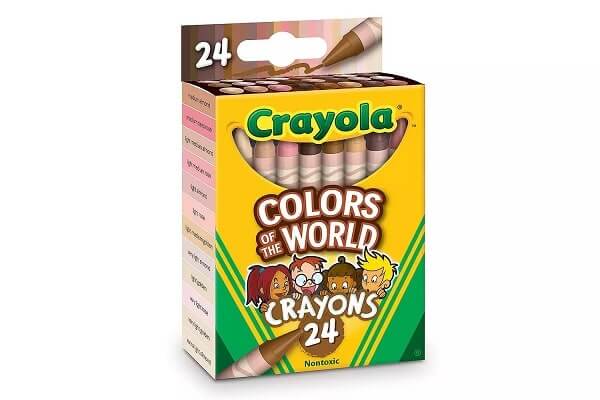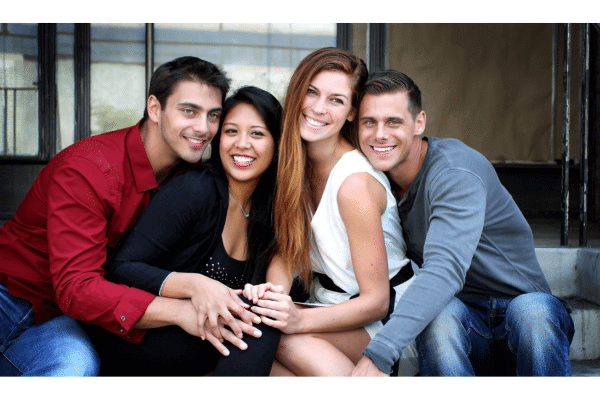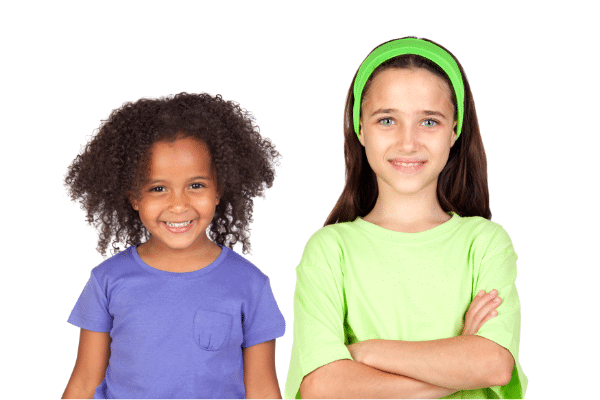This week Australia is celebrating Harmony Week. Whether you marked Harmony Day on 21 March, or International Day for the Elimination of Racial Discrimination, you were celebrating diversity and stressing the importance of inclusivity and belonging in all settings.
Have you ever had your child ask you, “Why does my skin look different to yours?”
Or “Why is my skin this colour?”
Have they issued statements like “I don’t want to play with this person because of how they look/sound?”
And have you felt completely stumped when hearing these questions/statements?
Then you might want to read on to learn how to deal with these situations.
Be responsive but keep it SIMPLE
Young children are naturally curious and observant. From a young age, they are able to notice similarities and differences between themselves and others. When they compare their skin colour or talk about others’ skin colour, it comes from a place of fascination, and is really very innocent. They are simply describing what they are seeing.
So if a child asks about differences in skin colour, simply respond with “That’s right! Well done for noticing that X looks different to you. That’s a great observation,” instead of silence or embarrassment that they have asked you these questions.
The way you respond to their questions NOW will set the tone for future discussions about race and cultural diversity.
Make it relatable
Apart from keeping it simple while talking about race, it’s also important to make it relatable to your child when they ask you questions and talk about what they have observed. An example would be “Mumma, why is my skin different to yours?” and you could respond with “Everyone’s skin is different. Look at your skin, and Nani’s skin, it’s different too. Look at our hair and eye colour, is it different or is it the same? Whatever it is, different or the same, it’s all amazing.”
Relating it to their own surroundings and people around them will make it easier for them to connect to this.
Expose your child to the different races and cultures in the world
This would naturally occur when they are in childcare/preschool/playgroups etc. Apart from that, cultivate a diverse library of books. Read story books with your kids that have main characters from different parts of the world. Surround them with pictures or artwork featuring people of various races and cultures.

Do the same with toys. Buy dolls/toy people that represent people of different ethnicities – these are readily available in shops and sites online.
I bought a coloured crayon box from Kmart recently that allows you to explore colours and find different shades to match skin colours. I’ve found this to be very useful as a conversation starter or simply for observation with my child.
All of these will help your child understand that their environment includes people of different races and cultures.

Don’t overreact
As parents, our natural tendency when children talk about race or differences amongst each other can be to overreact, panic, or freak out.
Reacting like this then makes it seem that the topic of diversity is taboo, and your child will pick up on this.
Did you know that a child aged 0-5 has not attached any emotional or social meaning or value to skin colour as yet?
So stick to facts and don’t overdo it. You could say something like “Y’s skin is different to yours, but is just as beautiful.”
If your child comments that X’s skin or Y’s hair is different to their own, acknowledge the fact, and bring out other behavioural aspects such as “X is so funny; she made me laugh when she said…” or that “Y sang so well today.”
In the rare instance that your child makes a negative racial comment, it usually reflects something that they’ve either heard in the media, at school or at home. Find out the origin of your child’s comment, and take it to the source.
Be a good role model
Kids do as we do, not as we say. As parents we must model acceptance and inclusivity through our own friends’ circle, our TV habits, or the books or magazines we read. Let your kids see you interact socially with people of different racial/ethnic groups. Also, model calling people by their names versus referring to them by their skin colour, so that their identity is not reduced to their skin colour.

I hope these tips have shown how you can make these conversations into teachable moments with your child. Acknowledge the differences that your child has noticed to prepare them to live in a multiethnic society in Australia. Let the underlying message be that your ethnicity is part of who you are, and whilst we have differences, we really do have more similarities.
READ ALSO: Teaching critical thinking




